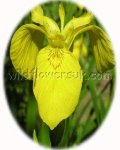 | ||
Perfect for pollinators Cornflower - Centaurea cyanus- is a familiar and beautiful plant, evocative of a past era when they filled our cornfields with colour, growing alongside poppies and corncockles. Sadly this plant is now very rare in the wild, but thankfully its effects can still be recreated in gardens and road verges etc. Cornflowers should be sown onto well drained fertile soils where there is plenty of sunlight. The deep blue flowers appear in high summer and attract bees, and butterflies, followed by seed-heads that attract birds such as goldflinches. Cornflowers look best when grown with Corn Poppies, Corn Chamomile or Corn Marigold which provide support for the cornflowers and various spectacular colour combinations. How to grow Cornflower Seeds Cornflowers should be sown directly outside in spring or autumn. As with poppies, cornflowers will not be very successful if sown into established grass, so seeds need to be sown onto cultivated soil and then firmed into the surface or lightly raked. Cornflowers grow best on light dry soils with plenty of sun. If sown in autumn or early spring, the plants will normally be in flower by June. A sowing in late spring will result in later flowering. RHS Perfect for Pollinators. The RHS Perfect for Pollinators mark is only given to plants that support pollinating insects in gardens. Bees, butterflies, moths, hoverflies and many others visit flowers to feed on nectar and pollen; while doing so they transfer pollen and increase seed set and fruit development. Find out more at: rhs.org.uk/plants To discover more plants for Bees, simply enter the word "pollinators" into the search box above. To buy Cornflower seeds To purchase Cornflower seeds, please select a quantity above and click add to cart. To ensure the best chance of success, we sell all of our wildflower seeds by weight, which ensures each wildflower seed packet contains a good quantity of seeds. The recommended sowing rate is 1 gram per square metre, and the number of Cornflower seeds per gram is approx. 120. All of our Wildflower seed packets contain seeds of Native British provenance. Summary type - annual, colour - Blue, height - 75 to 100cms, flowering months - June, July, August, habitat - Bare, Open Ground (eg Arable field margins, disturbed, waste ground), Attracts Birds especially goldfinches, Attracts Butterflies and Bees | ||
Printed 18/07/2025 23:05:55
st23_1 type annual colour blue height 75 to 100cms flowers june july august habitat bare open ground eg arable field margins disturbed waste ground attracts birds especially goldfinches attracts butterflies cornflower rhs perfect for pollinators pollinating insects bees butterflies moths hoverflies











 added to basket
added to basket